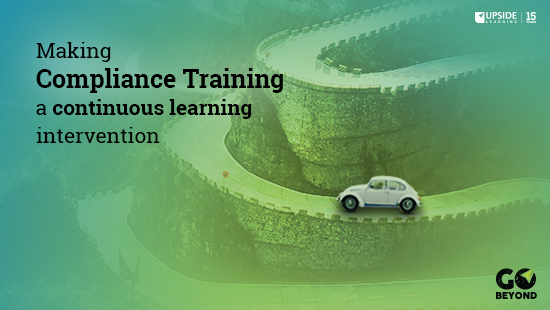Currently, most companies undertake compliance programs as a one-time intervention to prepare for audits to safeguard against risks. Irrespective of its popularity, compliance is an important aspect in today’s ever-evolving corporate landscape.
As per Brandon Hall Group’s 2018 Learning Strategy Study, over 50% of the companies it surveyed said that they regarded compliance training high-priority vis-à-vis other L&D initiatives. What companies could benefit from is a shift in perspective of how compliance programs are designed and delivered. Instead of one-time interventions, it would help seeing them as continuous programs that strategically instil a culture change across the organization. This way, it is more likely that compliance programs get the same treatment that other L&D initiatives currently receive.
With this simple change in perspective, it might be easier to address the notoriety associated with compliance programs. That in itself would be a significant stride towards changing what they mean to organizations and employees – that is, seeing them as more than dull sessions that simply call for a hefty investment in terms of time and money.
Considering the unavoidable nature of these programs, organizations could adopt a strategic approach that involves a thorough check into the roots of how organizations do business and study all the related aspects (or what we could call pillars of compliance, which we will address in the next few posts).
With the multi-dimensional nature of compliance training programs, it is important to examine the meaning and impact of the learning conditions involved. Learning Designers have a great role to play here in helping design effective learning interventions after understanding the interplay between these learning conditions.
We will talk about all this and more – particularly given the permanence of compliance programs – in our new eBook. Download here!


















